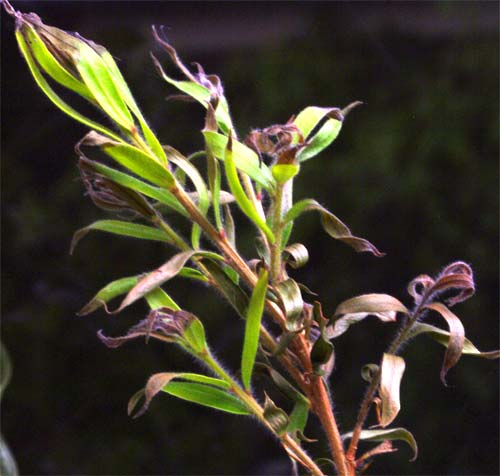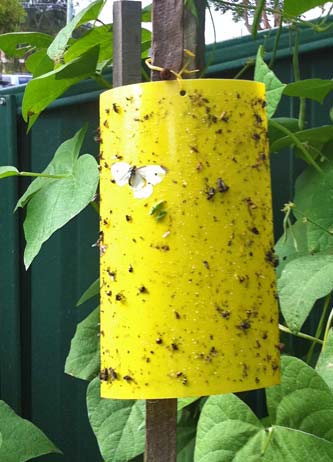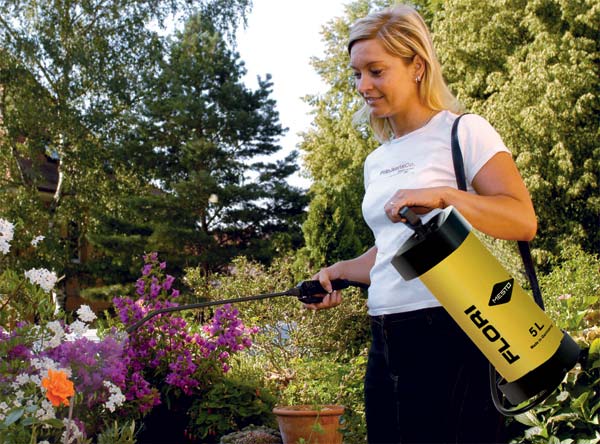Integrated Pest Management (IPM) was originally developed with the aim of reducing the amount of chemicals used by farmers to control pests but it works just as well in domestic gardens. And let’s face it, anything that reduces our dependence on chemicals has to be good for us and the environment.
Stage 1- Planning.
Q: Is the plant going to do well in my garden?
Stressed plants are more susceptible to disease. Planting species /varieties that suit your soil and climatic conditions will reduce the amount of stress on the plant and make your life easier.
When deciding on a plant it is worth looking around your neighbour’s gardens and see what seems to be growing well. If there are lots of a particular plant in your area, chances are it is easy to grow. If you can’t see your chosen plant growing anywhere in your area, it probably (but not always) means that it is not as easy to grow.

Be honest with yourself about the amount of sun/shade the area you intend to plant really does get. A plant that is getting too much or too little sun will not thrive.
Will there be enough room for that plant to grow? Congested beds can lead to poor air circulation and a potential increase in disease.
Some species are prone to a particular disease in certain conditions. It is worth speaking to experts at your local nursery about the best disease resistant alternatives for your area.
Stage 2 - Monitoring
Stressed Plants
It is important to check your plants for signs of stress like discoloured, curled or wilting leaves that may be caused by lack of water, too much or too little direct sun, high humidity or nutrient deficiency. These conditions weaken a plant making it more susceptible to infection.
Weeds
Weeds not only look unsightly, they can also contribute to weakening your prized plants by stealing water and nutrients as well as harbouring harmful insects. Many common weeds are annuals, so removing them as they appear will prevent more seeds being produced and therefore the number of weeds reappearing.
Catch the Problem Early
Check your plants regularly. Can you seen signs of insect activity, holes in the leaves, scale on the underside, powdery mildew on the surface? Are the buds or flowers dropping? Can you see any tiny black holes on the surface of the fruit.

Remove the Problem:
All infected leaves, flowers fruit need to be removed from the plant and the ground around it and destroyed immediately.
If a plant is badly infected it is often better to remove it completely for the sake of the others around it.
The aim is to remove all infected material and therefore the chance for disease to spread.
Insect monitoring:
There are various commercially available products that monitor specific insects.
Sticky White Fly Traps and Yellow Ribbon Traps can be hung in the branches of the plant and attract Whiteflies, Aphids, Thrips, Leafhoppers and Moths.
There are also blue sticky Thrip and Leafminer Traps.
Dakpots contain a lure and insecticide and attracts male fruit fly.
But these all only monitor these insects, it is for each gardener to decide at what level of infestation you wish to use chemicals to kill them off completely.
Stage 3 - Use Chemicals when all else fails
 Under the IPM system chemicals are only used as a last resort and are only used on the area that is affected.
Under the IPM system chemicals are only used as a last resort and are only used on the area that is affected.
If one plant is affected only that one and those next to the plant would be treated.
The aim of IPM is to reduce the amount of chemicals so it is important to make up only the amount of chemicals needed.
Summary:
By researching what will grow best in your garden you can save yourself a lot of effort and money.
Constant vigilance means that pests and diseases can remain in control and be manageable.
Less chemicals on your garden means more beneficial insects and a better balanced garden.
Your garden will be healthier and you will have more time to enjoy it.
But if you want to grow plants that are not entirely suitable for your area you should think of them as feature plants and be aware that you will need to give them extra care and attention.
Integrated Pest Management (IPM) for everyday gardens. © GardensOnline
Further reading from the Australian Academy of Science